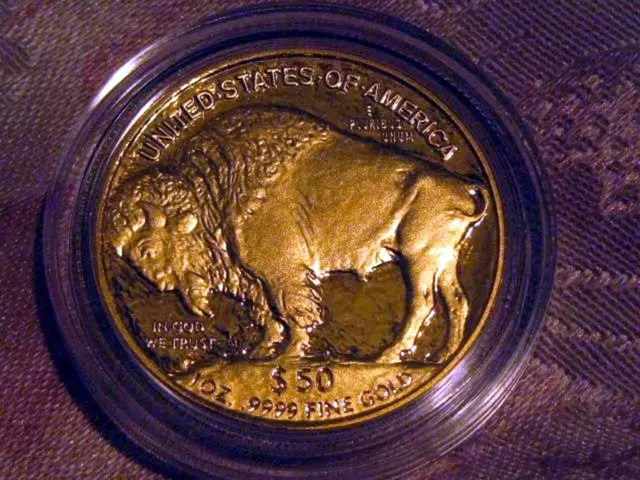Bitcoin Breaks Away from US Stocks, Tags Along with Gold
U.S. Dollar weakens, boosting Bitcoin and gold prices; could cryptocurrency be dissociating from equities?
In an unexpected twist, Bitcoin has been freeing itself from the shackles of US equities and starting to resemble gold more and more.
Last week, Bitcoin exhibited a 5% rally while the S&P 500 Index and tech-heavy Nasdaq fell by 5% and 6% respectively.
So, what's happening here? Well, Bitcoin has seemingly stopped following US stocks as a risk-on asset since February. Instead, it seems to be moving in sync with gold as a safe-haven trade since mid-April.
This trend has been picking up speed, with the cryptocurrency even hitting $90k during early trading on Tuesday this week. Some experts attribute this successful decoupling to the volatile political climate and devaluing US dollar.
In fact, in a recent interview with CNBC, market analyst Tom Lee predicted that Bitcoin could potentially surpass gold's highest value if it catches up to its previous peak of over $100,000. He also noted that the recent sell-off of US dollar-based assets could boost Bitcoin going forward.
However, Galaxy Digital's Head of Research, Alex Thorn, while acknowledging the remarkable decoupling trend, warned that it may not last permanently.The sustained sell-off in the U.S dollar and U.S stocks has been driven by ongoing threats by President Donald Trump to fire Fed chair Jerome Powell for being "too late" to cut interest rates.
Many analysts view Trump's move as a breach of Fed independence, which has led to a loss of confidence and mass investor exodus from U.S markets to safe-haven assets like gold and Bitcoin. As for gold, it has even hit a new all-time high of $3.5k per ounce recently.
It remains to be seen whether Bitcoin will manage to maintain its new-found safe-haven status and regain lost ground against gold in the future.
A Look at the Factors Responsible for This Move
- Structural Differentiation as a Neutral Asset: Bitcoin's lack of exposure to earnings, tariffs, or central bank policies makes it less susceptible to localized economic shocks and a non-political reserve asset during times of geopolitical and trade tensions.
- Global Macroeconomic Stress: Heightened volatility in traditional markets has been fueled by the resurgence of tariffs, high interest rates, and softening corporate earnings. The increased demand for assets uncorrelated to these risks has led investors to flock towards Bitcoin as a hedge against currency debasement and policy instability.
- Weak U.S. Dollar Dynamics: An inverse correlation between Bitcoin and the US dollar has emerged, with the appeal of Bitcoin as an alternative store of value growing as the US dollar weakens under economic uncertainty. This trend mirrors gold's historical behavior during fiat depreciation.
- Maturing Market Perception: Bitcoin is increasingly being viewed as "digital gold" due to its fixed supply and decentralized architecture, with investors now prioritizing its scarcity over speculative volatility.
- Improved Risk-Adjusted Returns: Bitcoin's Sharpe Ratio now exceeds most traditional assets, including US equities and bonds, providing a stronger case for diversification amid equity drawdowns.
When compared to traditional assets, Bitcoin's drivers, sensitivity to tariffs, Fed policy impact, and performance in 2025 stand out in stark contrast to US equities and gold. This shift highlights Bitcoin's evolving role as a macro hedge in politicized markets.
- Bitcoin's lack of exposure to earnings, tariffs, or central bank policies has led to its structural differentiation as a neutral asset, making it less susceptible to localized economic shocks and a non-political reserve asset during times of geopolitical and trade tensions.
- Heightened volatility in traditional markets has been fueled by the resurgence of tariffs, high interest rates, and softening corporate earnings, leading to increased demand for assets uncorrelated to these risks, causing investors to flock towards Bitcoin as a hedge against currency debasement and policy instability.
- An inverse correlation between Bitcoin and the US dollar has emerged, with the appeal of Bitcoin as an alternative store of value growing as the US dollar weakens under economic uncertainty, mirroring gold's historical behavior during fiat depreciation.
- Bitcoin is increasingly being viewed as "digital gold" due to its fixed supply and decentralized architecture, with investors now prioritizing its scarcity over speculative volatility.
- Bitcoin's Sharpe Ratio now exceeds most traditional assets, including US equities and bonds, providing a stronger case for diversification amid equity drawdowns.
- When compared to traditional assets, Bitcoin's drivers, sensitivity to tariffs, Fed policy impact, and performance in 2025 stand out in stark contrast to US equities and gold, highlighting Bitcoin's evolving role as a macro hedge in politicized markets.




